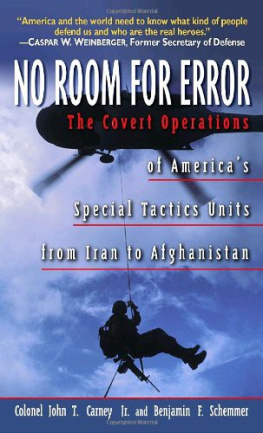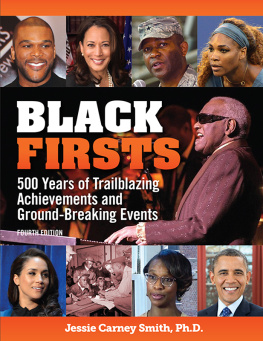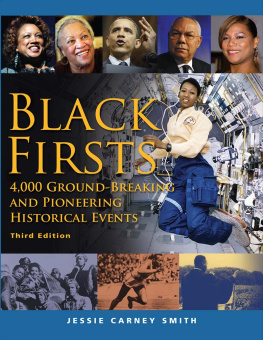Carney John T. Col - No Room for Error
Here you can read online Carney John T. Col - No Room for Error full text of the book (entire story) in english for free. Download pdf and epub, get meaning, cover and reviews about this ebook. genre: Non-fiction. Description of the work, (preface) as well as reviews are available. Best literature library LitArk.com created for fans of good reading and offers a wide selection of genres:
Romance novel
Science fiction
Adventure
Detective
Science
History
Home and family
Prose
Art
Politics
Computer
Non-fiction
Religion
Business
Children
Humor
Choose a favorite category and find really read worthwhile books. Enjoy immersion in the world of imagination, feel the emotions of the characters or learn something new for yourself, make an fascinating discovery.
- Book:No Room for Error
- Author:
- Genre:
- Rating:5 / 5
- Favourites:Add to favourites
- Your mark:
- 100
- 1
- 2
- 3
- 4
- 5
No Room for Error: summary, description and annotation
We offer to read an annotation, description, summary or preface (depends on what the author of the book "No Room for Error" wrote himself). If you haven't found the necessary information about the book — write in the comments, we will try to find it.
No Room for Error — read online for free the complete book (whole text) full work
Below is the text of the book, divided by pages. System saving the place of the last page read, allows you to conveniently read the book "No Room for Error" online for free, without having to search again every time where you left off. Put a bookmark, and you can go to the page where you finished reading at any time.
Font size:
Interval:
Bookmark:

Table of Contents
More praise for No Room for Error
This page-turner offers a straightforward, insightful view of the evolution of the U.S. Air Forces heroic but largely unsung Special Tactics units.... An exciting, action-packed story by a legendary figure in the special operations community, with a coauthor and editor who fought hard to win us support to revitalize Americas quiet professionals.
GEN. CARL W. STINER, USA (Ret.)
Former Commander in Chief of
U.S. Special Operation Command
A much-needed overview [that] provides an eyewitness account of the genesis of special tactics units... Carneys no-nonsense perspective on special operations forces over the last twenty odd years proves a worthy contender for space on military books shelves.
Army Times
Every officer in the armed forces should be compelled to read the chapter on the 1983 invasion of Grenada its an enraging primer on how not to do it.
SEYMOUR HERSH
Pulitzer Prizewinning investigative journalist
A precise military study... A clear, detailed, clinical analysis of operations from the failed Iranian rescue mission to the recent successes in Afghanistan.
Kirkus Reviews
By Benjamin F. Schemmer
ALMANAC OF LIBERTY
THE RAID
U.S. SPECIAL OPERATIONS FORCES
(forthcoming)
For the children and spouses
of the hundreds of quiet professionals
the special operations warriors and scores of unsung heroes
whose feats we seldom hear of
who have given their lives defending ours.
Introduction
I spent twenty-seven years in an Air Force uniform, traveling mostly by parachute and retiring in 1991 after fifteen years as a combat controller in special tactics units, the modern-day, far more versatile version of the Armys old airborne pathfinders. In 1977 I was picked to form the first such unit, which began as an ad hoc, six-man, classified team euphemistically called Brand X. We were to work with other classified units that were just being formed to combat terrorismprincipally airplane hijackings, in extremis hostage rescues and embassy seizures, and, potentially, recoveries of stolen nuclear weapons.
The missions were as varied as the places they took place in: the 1980 Desert One mission to rescue hostages from our embassy in Iran; the assault on Grenada to rescue six hundred medical students in 1983; the TWA 847 and Achille Lauro hijackings in the Mediterranean in 1985; the invasion that restored democracy to Panama in 1989; Desert Storm in 1991; Mogadishu, Somalia, in 1993; Haiti in 1995; the Balkans through the late 1990s; and, more recently, the war against terrorism in Afghanistan and Operation Iraqi Freedom in 2003.
Interspersed with these major events were smaller, clandestine, and often highly successful special operations, some of whose details remain classified today. What isnt classified is the toll these missions have exacted. One hundred and sixteen men from special operations were killed in action in those operations25 percent of the 465 total combat casualties. Compared against their small numbers (about 47,000 men and womenabout 2 percent of a force totaling 2,249,000 active duty and reserve military personnel), Americas special operators have lost their lives in combat since 1980 at a rate more than sixteen times higher than that of conventional U.S. forces. Beyond these losses, another thirty-six special operations men gave their lives during the same period on real-world missions in seventeen other countries. Taking those additional losses into account, the combat fatality rate for special operations forces equals almost twenty-two times that of conventional units.
This story describes many operations conducted by many elite units over the last twenty-two years, and the unique role that special tactics played in every one of these missions. So just what is a special operation? A pioneer of special operations, retired Army Lieutenant General Samuel V. Wilson, one of World War IIs Merrills Marauders, put it best when he once said, Special Operations is a three-step dance: Get there, get it done, and get back!1
Special operations encompasses every facet of unconventional warfare, usually waged by clandestine forces that operate in small groups against high-risk, high-payoff targets deep in hostile areas. Those forces handle direct action counterterrorist missions (offensive operations) abroad, principally handled by the Armys Delta Force and Navy SEALs, usually working with a small Air Force special tactics team. Special operations units also work with other federal agencies on antiterrorist measures (defensive operations) within the United States and overseas; lead the way in the war on drugs in foreign countries; work to contain the spread of weapons of mass destruction; and wage psychological warfare. Since the Vietnam War began, such units have led most forced-entry operations and have usually been the first ones deployed to quiet transnational unrest in places like Haiti, Panama, and the Balkans.
The units involved in these operations are all highly trained and highly motivated.
Special tactics units are made up of small Air Force teams of combat controllers who are experts in airfield seizure in denied areas, controlling air strikes, and extricating friendly forces from harms way. Embedded in their teams are pararescuemen (or PJs, for pararescue jumpers), combat trauma medics and rescue specialists who care for precious cargorescued hostages or wounded members of the special operations teams they support.
Special forces are Army units, long known as the Green Berets, built around twelve-man A-teams in seven groups, each oriented to a different region of the world and each with fifty-four such teams. (Most of the teams fighting in Afghanistan came from the 5th Special Forces Group at Fort Campbell, Kentucky, which is oriented to Central Asia, and from the 3rd Special Forces Group at Fort Bragg, North Carolina, whose principal area of expertise has been the Middle East and Africa.) The teams are versed in local cultures around the world, functionally fluent in at least one of the languages spoken there, and able to recruit, train, and supply indigenous personnel or military units to operate more effectively on their own or to synchronize their work with either conventional U.S. forces or U.S. special operations units.
U.S. special operations forces also include the Armys 75th Ranger Regiment, the 160th Special Operations Aviation Regiment, two special operations signal battalions, and psychological warfare as well as civil affairs units.
Air Force special operations units include the 16th Special Operations Wing (still known as Air Commandos) with its fixed-wing MC-130E/MC-130H Combat Talons, AC-130U gunships, and MC-130P refueling aircraft plus MH-53J Pave Low helicopters; the 919th Special Operations Squadron of the Air Force Reserves at Duke Field, Florida, with its MC-130E Combat Talons, plus two groups and similar squadrons abroad, as well as EC-130 Commando Solo aircraft in the Pennsylvania National Guard for psychological warfare broadcasts and electronic jamming.
The Navys Special Warfare Command has eight Se a- A ir- L and (SEAL) teams, two special boat and patrol craft squadrons, and several SEAL delivery units for clandestine insertions.
I was privileged to work with virtually all of these units during my active duty service; I have continued to work with them in one fashion or another since I retired in 1991; and now I arrange full college scholarships for the more than 435 children of special operations personnel killed on duty. I am deeply honored to have served with so many of their fathers.
Colonel John T. Carney Jr., USAF-Ret.
Font size:
Interval:
Bookmark:
Similar books «No Room for Error»
Look at similar books to No Room for Error. We have selected literature similar in name and meaning in the hope of providing readers with more options to find new, interesting, not yet read works.
Discussion, reviews of the book No Room for Error and just readers' own opinions. Leave your comments, write what you think about the work, its meaning or the main characters. Specify what exactly you liked and what you didn't like, and why you think so.












